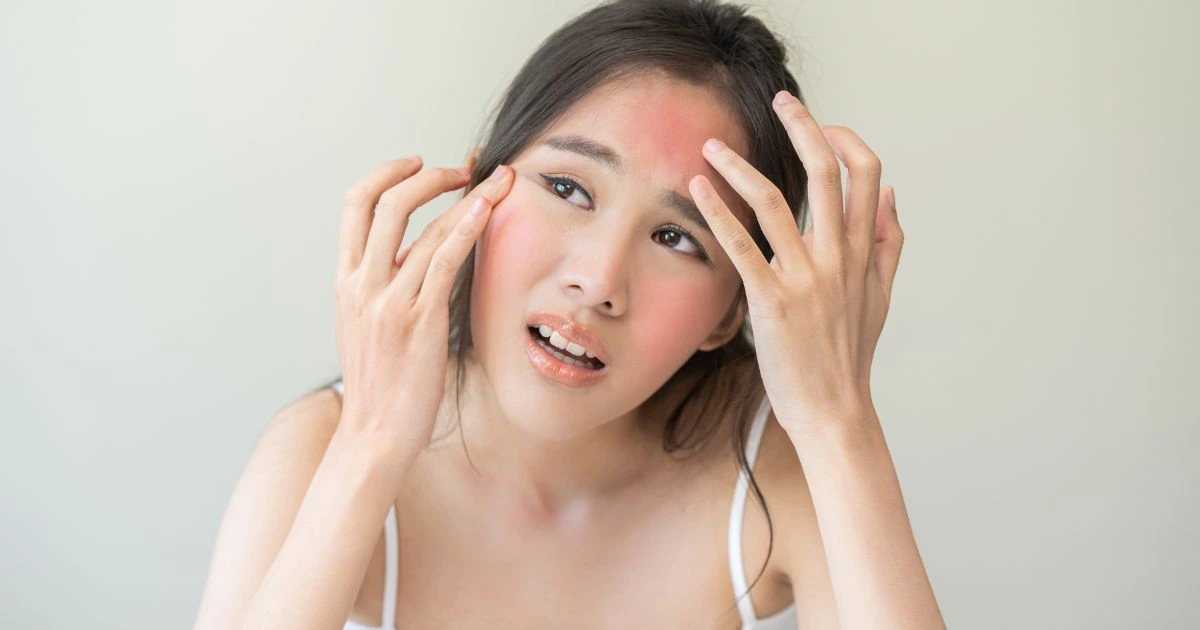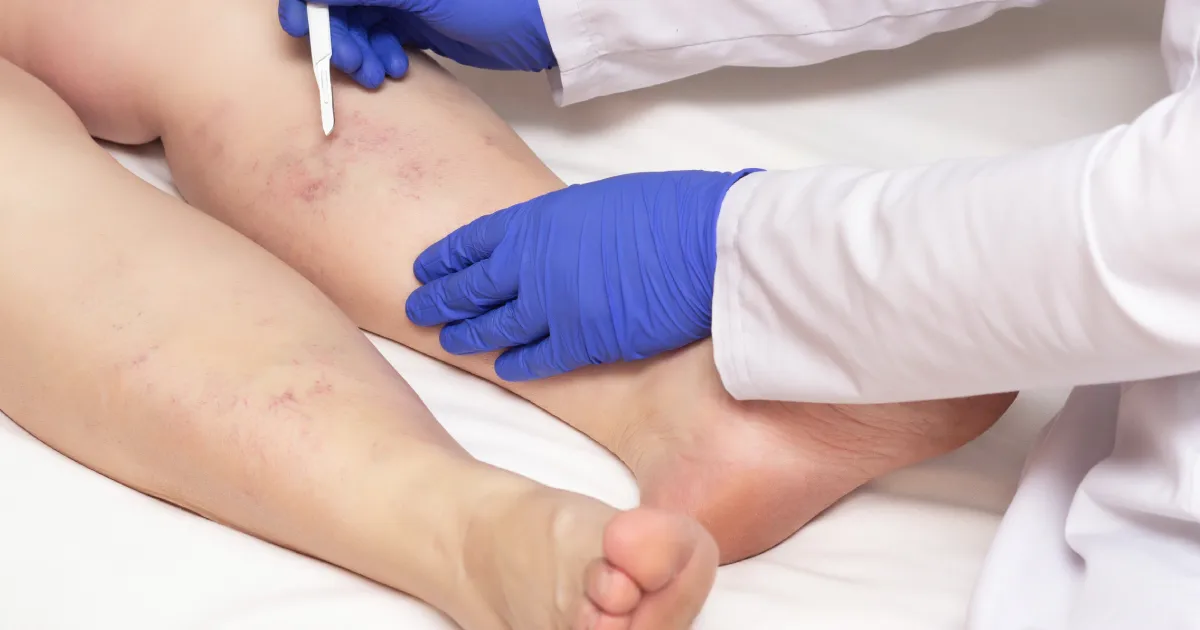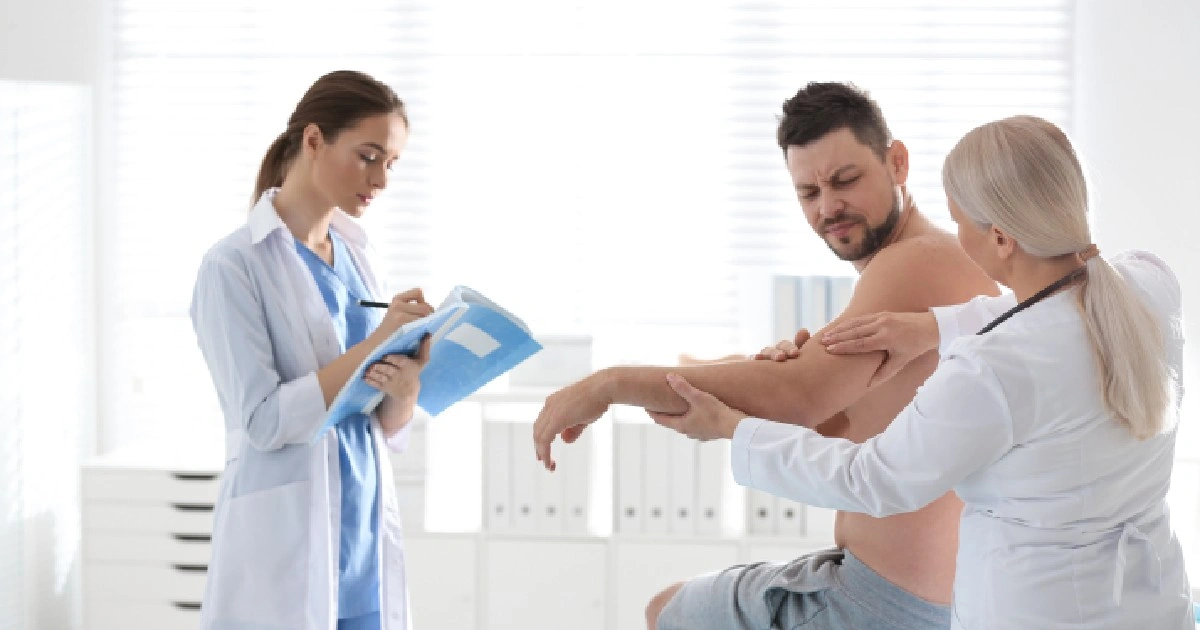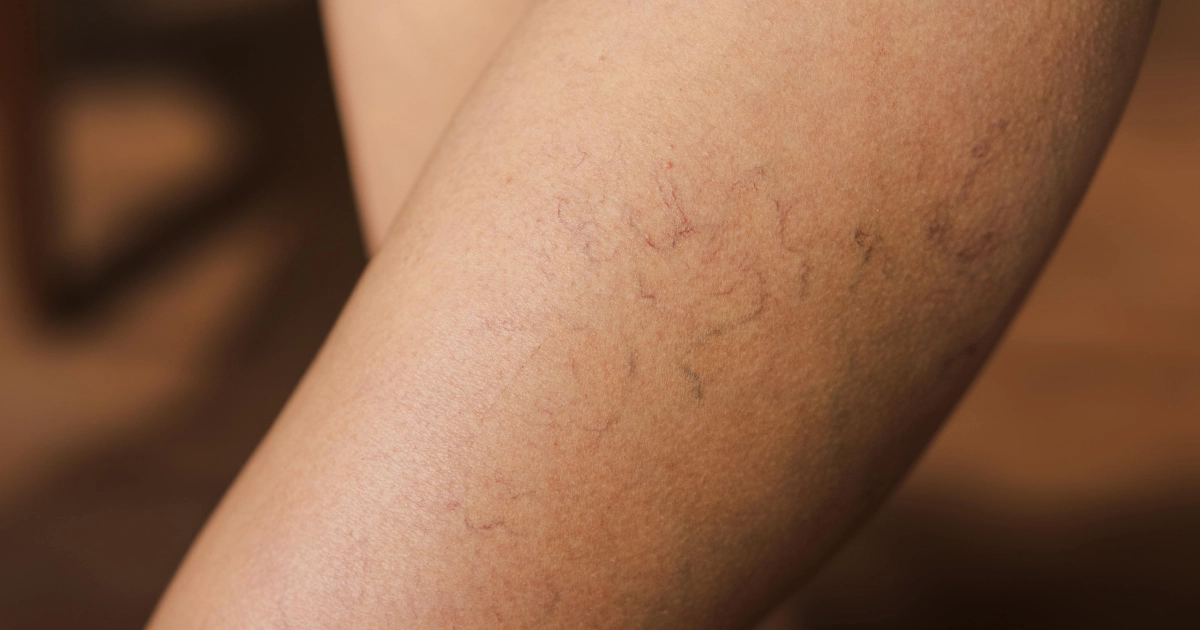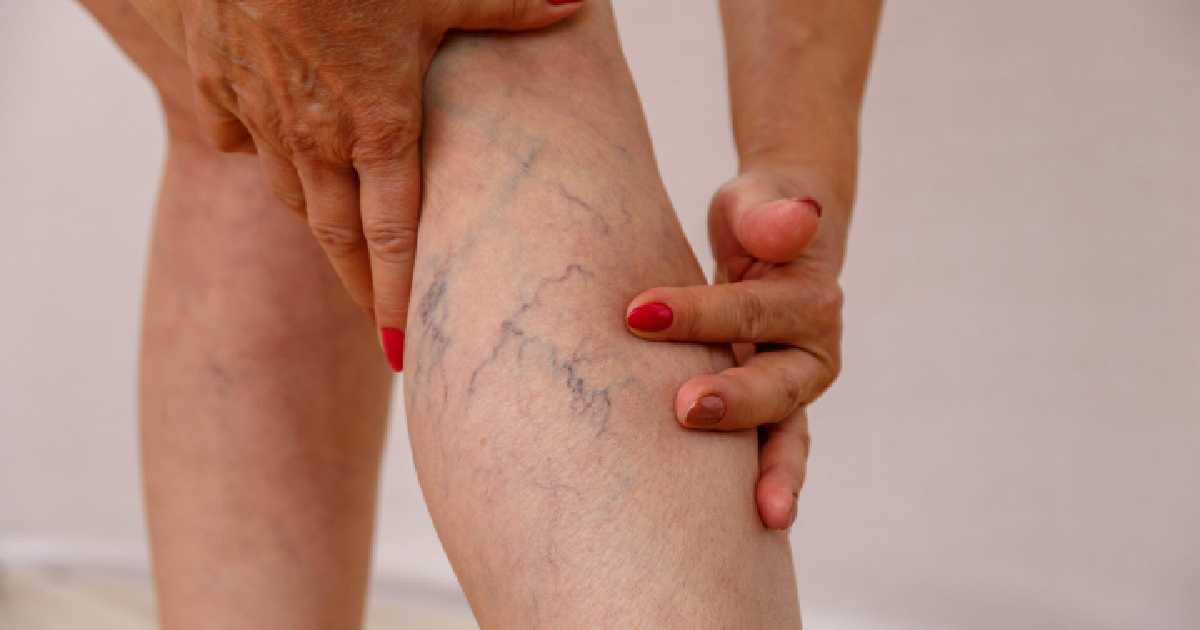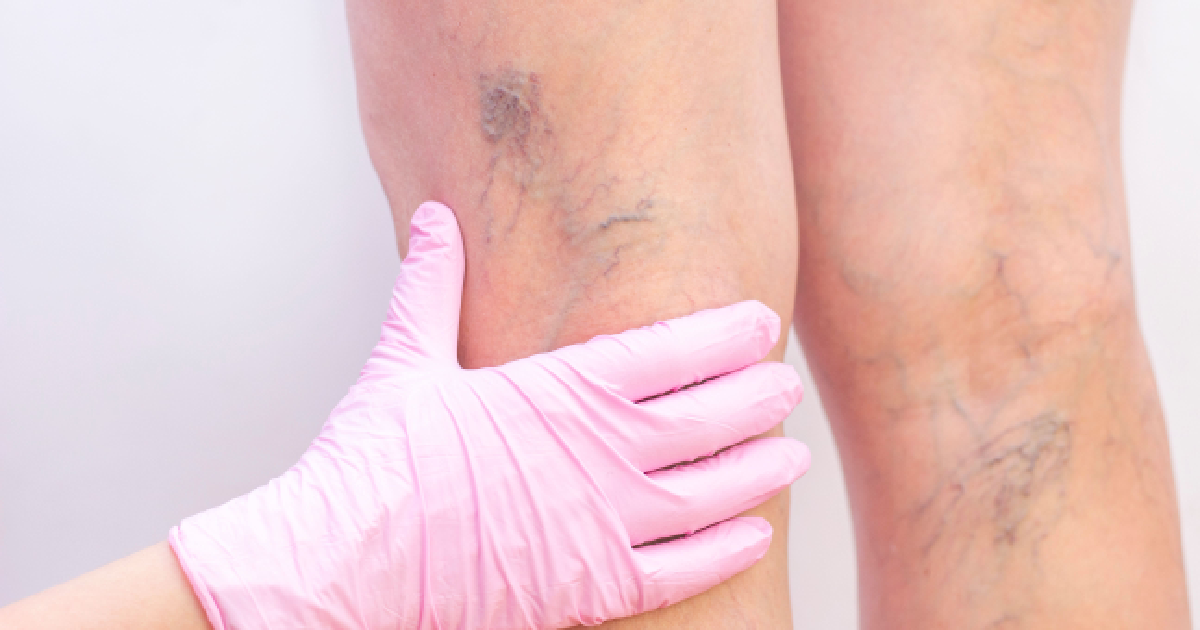Introduction
Varicose and spider veins are common vascular issues affecting millions, particularly as they age. While many view these conditions as merely cosmetic concerns, there’s growing awareness about their potential health risks.
Understanding the implications of varicose and spider veins can help you make informed decisions about your vascular health and treatment options.
What Are Varicose and Spider Veins?
Before diving into the health risks, it’s essential to understand what varicose and spider veins are. Varicose veins are enlarged, twisted veins that often appear on the legs and feet.
They are blue or dark purple and can be bulging or raised above the skin. Spider veins, on the other hand, are smaller, red, or blue veins that spread out like a web close to the skin’s surface.
These conditions occur when the veins’ valves fail, preventing blood from flowing backward. Blood pools in the veins, causing them to stretch, enlarge, and become varicose or spider veins.
The Difference Between Varicose and Spider Veins
While similar factors cause both varicose and spider veins, varicose veins are generally larger, more prominent, and can be painful, whereas spider veins are smaller, superficial, and typically painless. However, both can be a sign of underlying vascular issues.
The Health Risks Associated with Varicose and Spider Veins
Though often dismissed as cosmetic, varicose and spider veins can indicate more serious health concerns. Let’s explore some of the risks associated with these conditions.
Chronic Venous Insufficiency (CVI)
One of the most significant risks of untreated varicose veins is Chronic Venous Insufficiency (CVI). CVI happens when the veins in your legs cannot efficiently return blood to your heart. This matter can lead to symptoms such as leg swelling, pain, heaviness, and skin changes. If left untreated, CVI can worsen over time and significantly impact your quality of life.
Blood Clots
Varicose veins increases your risk of blood clots, particularly a condition known as superficial thrombophlebitis. This is when a blood clot forms in a vein just under the skin’s surface. While superficial thrombophlebitis is less dangerous than deep vein thrombosis (DVT), it can still be painful and requires medical attention.
DVT, however, is a more serious matter where a blood clot forms in a deeper vein, normally in the legs. If a part of the clot breaks off, it can travel to the lungs and create a pulmonary embolism, a life-threatening emergency.
Skin Ulcers
In severe cases, varicose veins leads to skin ulcers, particularly around the ankles. These ulcers occur due to the long-term buildup of fluid and pressure in the affected area, leading to skin breakdown. Varicose ulcers are notoriously difficult to heal and often require specialized medical care.
When Should You Be Concerned?
Knowing when to seek an advice for varicose and spider veins can be challenging. While many people live with these conditions without significant health issues, others may experience symptoms that warrant further evaluation.
Signs That Require Medical Attention
If you experience any of the following symptoms, it’s crucial to consult a healthcare provider:
- Persistent leg pain or cramping
- Swelling in the legs or ankles
- Skin discoloration around the veins
- Open sores or ulcers near the ankles
- Sudden onset of leg heaviness or fatigue
- Any signs of bleeding from a vein
These symptoms may indicate more severe vascular problems that require prompt treatment to prevent complications.
Treatment Options for Varicose and Spider Veins
Fortunately, various treatment options, from lifestyle changes to medical procedures, are available to manage varicose and spider veins.
Lifestyle Changes and Home Remedies
For mild cases, lifestyle changes can effectively manage symptoms and prevent the condition from worsening. Some helpful strategies include:
- Exercise: Regular physical activity can change blood circulation and lessens the risk of developing new varicose veins.
- Compression Stockings: Wearing compression stockings lessens swelling and discomfort by improving leg blood flow.
- Elevating the Legs: Elevating your legs above heart level several times daily can help reduce swelling and improve circulation.
While these measures won’t eliminate varicose or spider veins, they can ease symptoms and prevent progression.
Medical Treatments
It may be necessary for more severe cases or when lifestyle changes aren’t enough. Some of the most effective options include:
- Sclerotherapy: This approach involves putting a solution directly into the affected veins, causing them to collapse and fade away. Sclerotherapy is particularly effective for spider veins and smaller varicose veins.
- Endovenous Laser Therapy (EVLT): EVLT uses laser energy to seal off and close varicose veins, which are then absorbed by the body over time. This less invasive procedure is often performed in an outpatient setting.
- Vein Stripping and Ligation: In more severe cases, surgically removing varicose veins may be necessary. This procedure involves tying off and eliminating the affected veins through small incisions.
Preventing Varicose and Spider Veins
Prevention is always better than cure, which also holds true for varicose and spider veins. While not all cases can be prevented, certain measures can reduce risk.
Tips for Preventing Varicose and Spider Veins
- Stay Active: Regular exercise changes blood circulation and strengthens the veins.
- Maintain a Healthy Weight: Excess weight puts extra pressure on your veins, leading to varicose veins.
- Avoid Prolonged Sitting or Standing: If your job needs you to sit or stand for long periods, try to take breaks and move around to improve circulation.
- Wear Comfortable Shoes: Avoid high heels, as they can limit blood flow from the legs to the heart.
By incorporating these habits into your usual routine, you can lessen your chances of developing varicose and spider veins.
Final Thoughts
While varicose and spider veins are often considered minor cosmetic issues, they can indicate more serious health risks that shouldn’t be ignored. If you’re experiencing symptoms like leg pain, swelling, or skin changes, seeking medical advice is essential to prevent potential complications.
Fortunately, effective treatments are available to manage these conditions and improve vascular health. Whether considering lifestyle changes or exploring medical treatments, taking proactive steps can make a difference.
Book a Session Today
Those in Texas seeking professional advice or treatment should book an appointment at Texas Vein and Vascular. Our experienced team is here to provide the best care and helping you achieve optimal vascular health.

